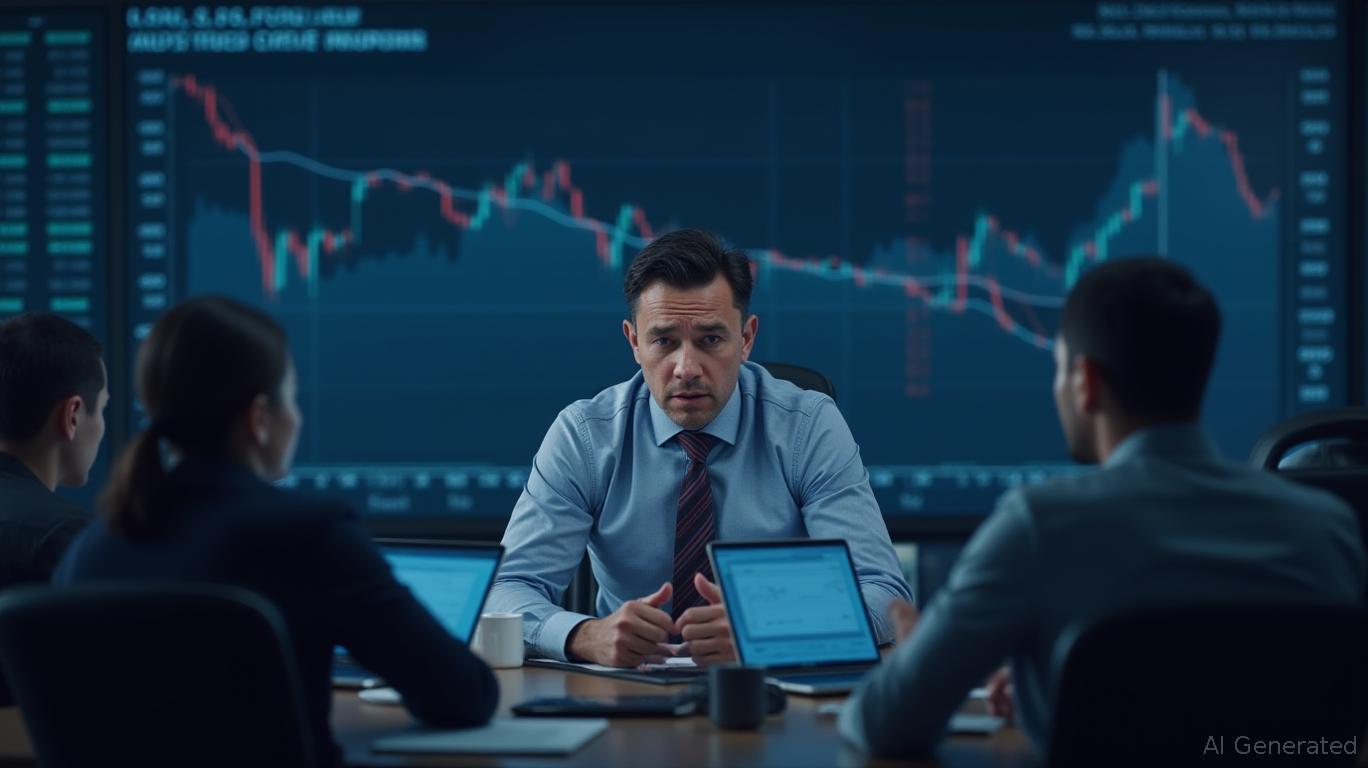The Yield Curve's Warning: Why Bond Investors Must Act Now Amid Tariff Wars and Fed Gridlock
The U.S. Treasury market is at a crossroads. A prolonged yield curve inversion, Fed policy paralysis, and escalating geopolitical tensions have created a perfect storm of risks for bond investors. With short-term rates now exceeding long-term yields—a phenomenon historically linked to recessions—the time to act is now. Here's why the stakes are higher than ever, and how to position your portfolio to survive the fallout.

The Inversion Crisis: A Recession Bellwether Gone Silent
The 10-2 year Treasury yield spread—the most watched indicator of economic health—has been negative for over two years, with
hitting -0.47% in recent weeks. This inversion, where short-term borrowing costs outpace long-term rates, has correctly predicted every U.S. recession since 1955. But this time, the warning is louder and more persistent.Historically, an inverted curve typically precedes a downturn by 6–24 months. Today, that signal is flashing bright red. The inversion isn't just a blip; it's a structural shift driven by trade wars, inflation, and a Federal Reserve trapped between fighting price spikes and avoiding a crash.
Fed Policy Paralysis: Trapped Between a Rock and a Hard Place
The Federal Reserve finds itself in a no-win scenario. While inflation has cooled from 2023's peak, it remains stubbornly above the 2% target. Meanwhile, trade tensions—like China's 125% tariffs on U.S. goods and U.S. retaliatory measures—threaten to reignite price pressures.
The Fed's toolkit is broken. Rate cuts are politically toxic, while hikes risk triggering a bond market rout. The result? A paralyzed central bank, unable to stabilize markets. This uncertainty is pushing investors into short-term Treasuries, exacerbating the inversion.
Geopolitical Risks: Tariffs, Trade Wars, and the Bond Market's Breaking Point
The U.S.-China trade war is no longer a distant threat—it's destabilizing the economy. Escalating tariffs are distorting supply chains, spiking input costs, and fueling inflation. The University of Michigan's consumer sentiment index hit a 60-year low in early 2025, with one-year inflation expectations soaring to levels not seen since the 1980s.
This environment is toxic for long-term bonds. As investors flee duration risk, yields on 10-year Treasuries have surged past 4.5%, while short-term rates remain elevated. The result? A market ripe for volatility.
Hedging Strategies: Short-Term Treasuries and TIPS—Your Lifelines
The risks are clear, but so are the solutions. Here's how to navigate this crisis:
Shorten Duration: Embrace Short-Term Treasuries
IEI Trend
The inversion means short-term bonds now offer better risk-adjusted returns. Instruments like the iShares Short Treasury Bond ETF (SHY) or the SPDR Portfolio Short-Term Treasury ETF (SPTS) limit exposure to rate hikes while providing liquidity.Inflation-Linked Securities: TIPS for Turbulent Times
Treasury Inflation-Protected Securities (TIPS) adjust principal for inflation, shielding investors from price spikes. The iShares TIPS ETF (TIP) or the Schwab Short-Term TIPS ETF (STIP) offer inflation hedging without overextending maturities.Avoid Long-Duration Debt Like the Plague
The 30-year Treasury yield is flirting with 5%, but duration risk is off the charts. A 1% rise in rates could wipe 15%+ off a 30-year bond's value. Stick to maturities under five years.
The Bottom Line: Act Now or Pay the Price
The Treasury market's vulnerabilities are no longer theoretical. The inversion, Fed gridlock, and trade wars are a trifecta of risks that could trigger a bond market reckoning. Investors who cling to long-dated Treasuries or ignore inflation exposure are playing with fire.
The clock is ticking. Positioning for short-term Treasuries and TIPS isn't just prudent—it's essential. Delay, and you risk watching your portfolio crumble as this fragile market finally snaps.
Name |
|---|
| ProShares Ultra 7-10 Year TreasuryUST |
| iShares TIPS Bond ETFTIP |
The writing is on the wall. The question is: Are you reading it?
Investors who delay could be left exposed to catastrophic losses. Secure your position before it's too late.

Comments
No comments yet